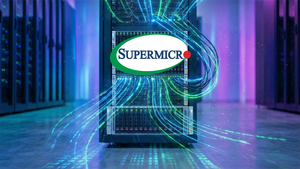Words by 3p Editors
SOURCE: TriplePundit
DESCRIPTION:
There’s no shortage of data and stories pointing to the impacts that single-use plastics have on the planet. No one entity can take on this challenge alone, so partnerships will be instrumental in shifting society away from excessive packaging and closer to a circular economy.
One such partnership is the U.S. Plastics Pact, a coalition of brands, retailers, government agencies, and nonprofits that seeks the goal of having all plastic packaging be recyclable, reusable or compostable by 2025. A group founded by The Recycling Partnership and the World Wildlife Fund, the U.S. Plastics Pact started in August 2020 as part of the Ellen MacArthur Foundation’s worldwide network of national and regional plastics pacts, which includes chapters across North and South America, Africa, and Europe.
Here in the U.S., the Pact has set several targets to transform plastic packaging by 2025. In addition to that aforementioned goal of all plastic packaging being recyclable, reusable or compostable, the U.S. Pact’s roadmap aims for an average of 30 percent recycled or responsibly sourced bio-based content in plastic packaging by 2025. The group also seeks to ensure that half of all plastic packaging can be recycled or composted by that year.
“Recycling-alone isn’t going to end the plastics waste crisis,” said Emily Tipaldo, executive director of the U.S. Plastics Pact, which includes top consumer goods companies and retailers including Mars, Inc., Coca-Cola, Target and Walmart. “Instead it requires a suite of solutions and collaboration between business, government and civil society.”
One of the overarching challenges is defining what “recyclable,” “reusable” or “compostable” means in the first place. Just as individuals have their own definitions, the nuance applies to governments at all levels, too. “For every locality and state, ‘recyclable’ means something different,” Tipaldo said. As with any industry, stakeholders have to develop a set of consistent standards first.
To that end, the U.S. Pact arrived at one of its first milestones earlier this year: defining the plastic packaging that its members have deemed “problematic and unnecessary.” Some of the materials are familiar to the U.S. public — including PET bottles that are opaque or pigmented; labels that include adhesives, inks or paper that can render the packaging non-recyclable; polystyrene and its cousin, polystyrene foam (or EPS, commonly known as Styrofoam); and PVC, often used in both building materials and packaging. Single-use coffee stirrers, straws and cutlery also appear on the list, unless those items are sold bundled at a retailer or wholesaler.
U.S. Pact members are already making progress on cutting these materials out, Tipaldo said. “66 percent of [business members] are already making plans and are rolling out initiatives to eliminate these materials, such as resins like PVC or polystyrene in plastic packaging,” she explained.
Such scale is crucial to the U.S. Pact’s future success, as those same business members account for 33 percent of plastic packaging by weight in the U.S. Of that collective 5.6 megatons of plastic waste, the top three plastic packaging materials are PET bottles (generally used for beverages), HDPE bottles (often used for milk jugs and personal care products), and multi-material flexible packaging (which includes everything from snack bags and pouches to plastic seals that keep food fresh).
Why does that one-third statistic matter? The fewer types of plastic resins that are used in packaging nationwide, the greater possibility that mechanical plastic recycling — and, more ideally, the advent of a more circular economy — can scale up. Evidence suggests this shift is underway: “Right now, our baseline is that 37 percent of the packaging that is put out by the U.S. Pact’s signatories is now recyclable, reusable or compostable,” Tipaldo said.
Such moves on the behalf of food companies, manufacturers and retailers are crucial if the world hopes to wean itself away from the excessive consumption of plastic. Companies have also had to find ways to innovate due to several recent changes in global markets, including the decision by China and other countries to stop accepting waste from U.S. recycling streams.
That shift was driven by the outcry over loopholes in the Basel Convention, a treaty that dates back to the late 1980s meant to prevent the shipping of hazardous waste to poorer nations. According to critics, the treaty had since become a tool for nations like the U.S. to use developing countries to process waste — and these lower-income nations overall had far fewer regulations to manage the safe disposal of waste when compared to richer nations such as the U.S. “We know that supply is a big challenge,” Tipaldo explained. “A couple of years ago when there were changes being made to the Basel Convention, they had the unintended effect of cutting off recycled plastic trade in a responsible way.”
Still, the work of the U.S. Plastics Pact is beginning to show how the largest companies in the U.S. are rethinking their packaging. Mars, for example, eliminated 98 metric tons of waste by removing the outer plastic wrap from the boxes of M&M’S sold in movie theaters and retail outlets like Walmart and Target; the company also redesigned some of the plastic in some of its Orbit-branded gum packaging so that it can be recycled in more municipal recycling streams. Last year, Mars launched a Terracycle project with its Karma pet food brand and is exploring additional programs across its petfood portfolio.
In 2019, Mars committed to making 100 percent of its packaging reusable, recyclable or compostable, including a 25 percent reduction in the use of virgin plastics and piloting new reuse-based business models. The company says it is holding itself accountable by embedding these targets into how it measures annual success, and the top 300 executives at Mars now have remuneration linked to delivering against packaging targets.
“Eliminating packaging waste today is a massive challenge, and Mars is eliminating unnecessary packaging, removing difficult to recycle materials such as PVC, and using recycled content wherever possible,” said Allison Lin, global vice president of packaging for Mars. “But fixing the fundamental issues in recycling plastic packaging cannot be done by businesses alone. Through our partnerships with the U.S. Plastics Pact and other industry leaders, we’re actively working to drive true systems change in support of a circular economy where packaging never becomes waste.”
Working with the U.S. Pact has also pushed more companies to launch new plans to overhaul their packaging, and working with this group also helps companies to level with their stakeholders about how they will prevent their packaging from ending up in landfills.
That shift certainly works for Tipaldo. “Forcing transparency and responsibility into the system is what the U.S. Pact is about,” she said.
This article series is sponsored by Mars and produced by the TriplePundit editorial team.
Image credit: Sigmund/Unsplash
KEYWORDS: triplepundit, Recycling, Mars, U.S. Pact






